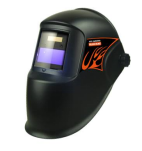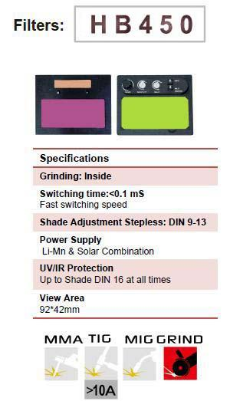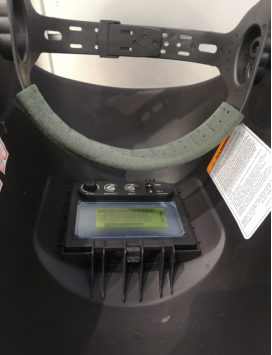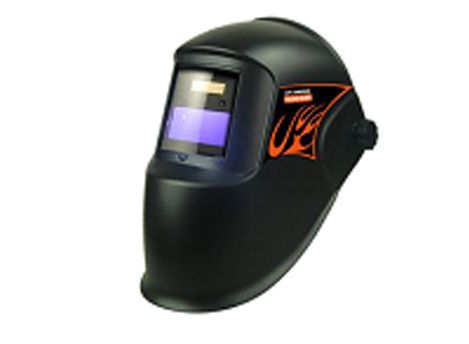HB-1450 Introduction
Model | Product picture | Filter | Description |
HB-1450 | 
| 
 | 
|


Buyer’s Guide
Before deciding which helmet is right for you, here are a couple of factors you should consider. Even if you don’t choose one of the helmets I’ve recommended, this buyer’s guide will still be useful in your search.
Weight
If you’re going to weld for more than a few hours a day, your neck will feel the difference between a light and a heavy welding helmet. Of course, after a while, your neck will build up the muscle to carry the weight of a welding helmet more easily, but there will still be some growing pains till you get there. So try to go for a helmet that doesn’t weigh more than 2 lbs.
Comfort
Even a lighter helmet can be a pain in the… well, neck. If the headgear is poking you or tweezing your hairs out while you’re trying to weld, it’s not going to be a very good weld. It can really take the focus away from your work, or worse, lead to an injury. So other than weight, headgear designed with proper weight distribution is something to look out for.
Viewing Area
There are two types of people when it comes to this: people who only want to see the weld, and then take the helmet off, and people who want to see enough to be able to move around while wearing the helmet. It’s up to you to decide which way suits you better.
If you’re in the former category, you can go for a helmet with a more limited viewing area and one that doesn’t necessarily have fancy darkening features. If you’re in the latter category, you can opt for a helmet with a broader viewing area and maybe even true-color technology.
Optical Clarity
Have you ever tried wearing someone else’s spectacles? Your vision is all blurry, and after a minute or so you will start feeling eye strain and you might even get a headache. It’s very much the same thing if you’re looking through a blurry display. That’s why there’s a special optical rating that tells you the clarity of the lens. For instance, the perfect score is 1/1/1/1. A helmet with a 1/1/1/2 will be almost as good, but with a bit of a bend in the lens that can result in a little blurriness. Try to get a helmet that doesn’t have a lower optical rating than 1/1/1/2.
Durability
The welding helmet is not only for protecting your eyes, but it also has to protect your head and neck from sparks, spatter, and flying, hot, sharp metal. Look for a helmet with plastic that’s sturdy enough to withstand such conditions.
Price
not everyone can afford the most expensive helmets out there, or maybe welding is nothing more than a hobby for you so you don’t want to spend a small fortune on a single piece of equipment. If you’re going to weld for a living, go for a more professional-grade welding helmet. They’re more reliable and last longer.
Your safety depends on having a quality welding helmet during all your fabrication projects. We, as welding helmet manufacturers, provide you with a variety of helmet options for superior protection and durability. Shop for the helmet you need for your project, from auto-darkening to passive shades.










